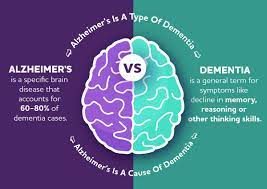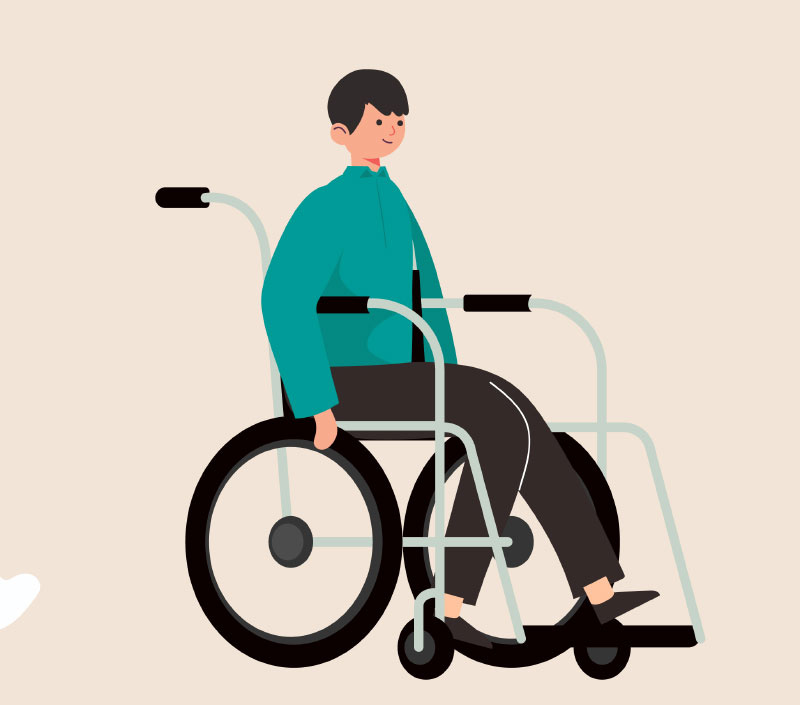Alzheimer’s disease and other types of dementia are both neurodegenerative conditions that affect cognitive function, memory, and daily living abilities, but they have distinct characteristics and underlying causes. Here’s a breakdown of the differences between Alzheimer’s disease and other types of dementia:
Alzheimer’s Disease:
Cause: Alzheimer’s disease is the most common cause of dementia. It is characterized by the accumulation of abnormal protein deposits in the brain, including beta-amyloid plaques and tau tangles.
Symptoms: Early symptoms often include memory loss, difficulty with language and communication, confusion, and impaired reasoning. As the disease progresses, individuals may experience personality changes, disorientation, and challenges with basic tasks.
Progression: Alzheimer’s disease usually progresses gradually over several years. Memory loss and cognitive decline worsen as the disease advances.
Age of Onset: Alzheimer’s disease is more commonly seen in older adults, typically after the age of 65. However, early-onset Alzheimer’s can occur in individuals in their 40s or 50s.
Diagnosis: Diagnosis is typically based on clinical assessments, medical history, cognitive testing, and brain imaging. Autopsy remains the only definitive way to confirm Alzheimer’s disease.
Other Types of Dementia:
There are several other types of dementia, each with unique causes and characteristics:
Vascular Dementia: This type of dementia is caused by reduced blood flow to the brain due to blood vessel blockages or damage. It often results from strokes or other vascular problems. Symptoms can vary widely depending on the location of brain damage.
Lewy Body Dementia: This condition is characterized by the presence of abnormal protein deposits called Lewy bodies in the brain. It leads to cognitive fluctuations, visual hallucinations, motor symptoms resembling Parkinson’s disease, and rapid changes in attention and alertness.
Frontotemporal Dementia (FTD): FTD is characterized by the degeneration of the frontal and temporal lobes of the brain. It often leads to changes in behaviour, personality, and language abilities. Memory might be less affected in the early stages compared to other forms of dementia.
Mixed Dementia: This refers to cases where a person has more than one type of dementia, often a combination of Alzheimer’s disease and vascular dementia.
Creutzfeldt-Jakob Disease: This rare, rapidly progressive degenerative disorder is caused by abnormal proteins called prions. It results in severe neurological symptoms, including muscle stiffness, twitching, and cognitive decline.
Each type of dementia has its own set of symptoms, progression patterns, and underlying causes. Accurate diagnosis by a medical professional is crucial for effective management and care planning. Although there is currently no cure for most types of dementia, early intervention and appropriate support can help manage symptoms and improve the quality of life for individuals and their caregivers.
For more details, consult Dr. Amit Shah, one of the best Consultant Neurologist in Mumbai.



